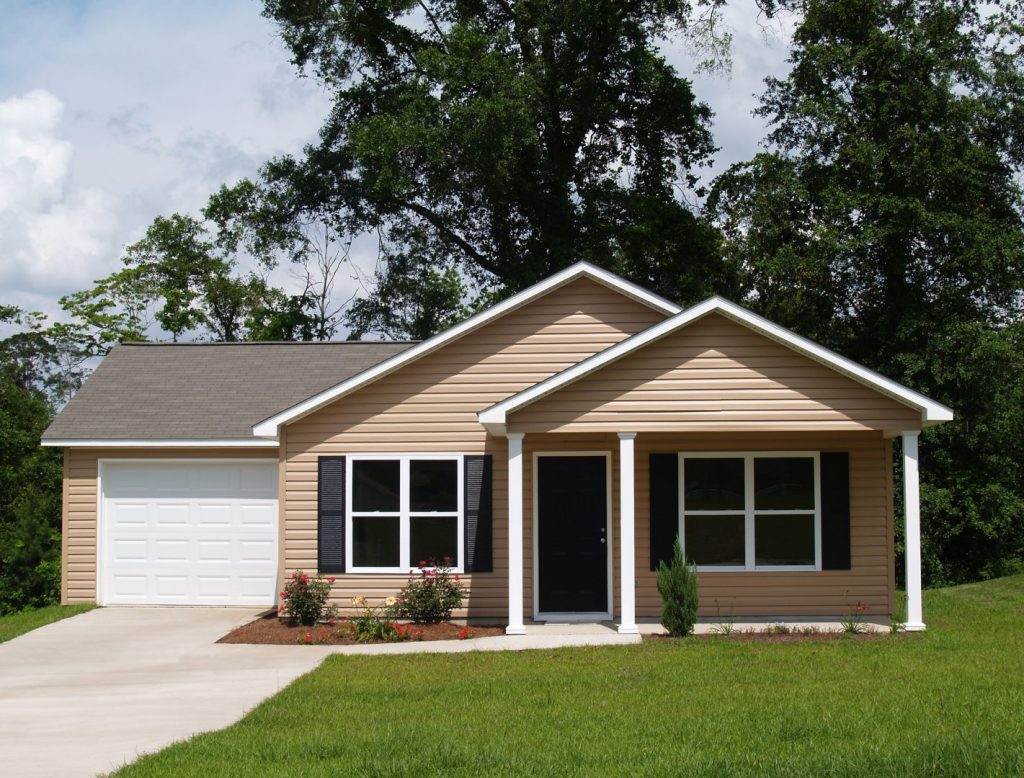
This smaller, modest home with an accessible driveway and entrance accommodates a range of abilities, whether a lesser-ability is present now or not
When it comes to aging in place evaluations and renovations, we tend to look at someone’s ability as being fully capable of physical and sensory activities or disabled to some degree. While there are people in-between, we tend to approach our design considerations in working with people who have a visible and pronounced disability of some type – typically one involving mobility – or those relatively free of any such limitations.
It’s easy to spot someone who has a pronounced disability that affects their vision, hearing, or mobility. There are outward signs of this that we recognize. But what about the less obvious indications? Are there people that have various conditions that are impacting their daily lives that we may tend overlook just because we don’t immediately recognize what they are experiencing?
Let’s consider the aspect of “less-ability” – being less than one-hundred percent of our optimal function and potential. This likely applies to everyone at some time, and for some people, it can be an on-going annoyance. It can be something that lasts only a few days – likely being unable to get out of bed due to the flu or similar illness or a severe ankle sprain. It can be carpal tunnel, migraine headaches, vision issues that we don’t appreciate just from looking at someone, muscle strength or tone that affects a person’s grasp and holding ability, and so many other issues that occur as we go through life. Some are fleeting, some are recurring, and some are long-term. Rare is the person with no issues throughout their entire lifespan.
Since we never know how or if something might be affecting us, it’s best to equip our homes and those of our clients with the most accessible features possible. An excellent way of doing this is through universal design strategies. The premise of universal design is that most anyone of any age, ability, physical size, or education can access and use the various items within a home – both physical features and elements of the home and those that have been introduced such as appliances and furnishings – without special consideration.
Of course, fully able and capable individuals can use the features within a home, and if items are specifically designed for those a particular physical, sensory, or cognitive limitation, they can as well. The real issue is those of us who from time-to-time are less-able than at other times. It is for this reason that we use universal design strategies and treatments. This is part of a comprehensive aging in place general concept or approach as well.
A universal design emphasis means that it does not matter what challenges we might be facing – and if they are different today than yesterday – we can still function well within the space. This means than fell able, disabled, or less-abled, we can walk through or maneuver through doorways, down hallways, and use other features in the home equally well because they have been created for universal use and appeal. They can be used whether someone is standing or seated, has full or limited reach or range of motion, and regardless of any other limitations they might be experiencing.
Universal design addresses and accommodates in advance such access issues as passageways (including doors and doorways), illumination (including artificial lighting as well as windows and reflective surfaces), footing surfaces, cabinet and appliance handles and pulls, bathroom fixtures and controls, countertop and shelving heights, and similar home features.
When someone has full ability it doesn’t matter if something is located at a convenient height, or above or their reach. They will find a way to retrieve something stored at that location or use the device. If they have to stretch, stand on a stool or ladder, or squat, kneel, or bend, they can do this. A lesser-abled person will have challenges. Since a lesser-ability comes in some many different forms and hampers someone’s function to various extents, we cannot know what will be needed for any specific instance. This is where universal design comes into play.
Universal design means that no special design or accommodation needs to occur for temporary or longer-term impairments to full function. Whether something happens that affects how we or anyone else functions within their home, universal design treatments means that regardless of someone’s needs or abilities – from full-abled to much less-so – our living space will allow us to feel comfortable and safe within it.
Universal design does not rule out more specific treatments for specific aging in place concerns, but it accommodates such a range of abilities and needs that many of life’s difficulties – regardless of how they occur or long they may persist. We should focus on providing such features when we can – before a need is present.
